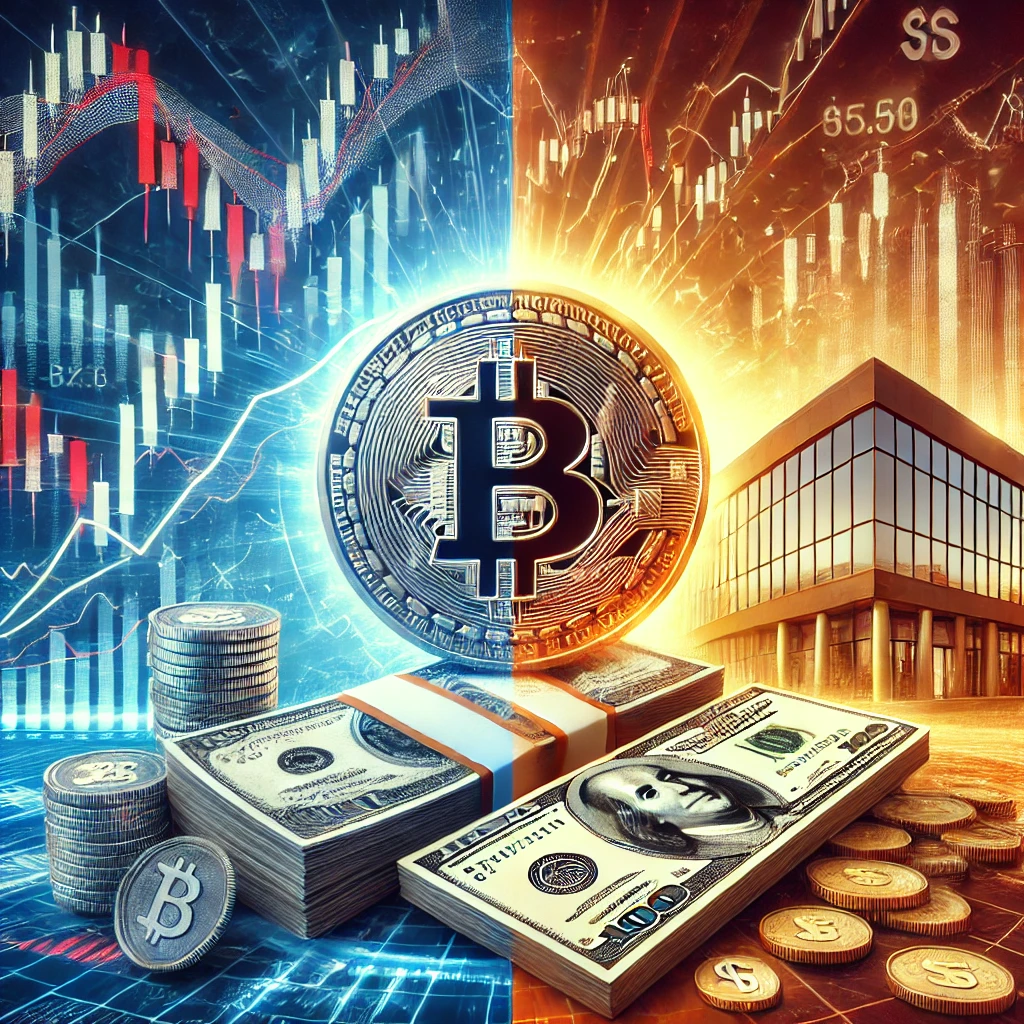Bitcoin and some stocks with fixed shares outstanding can be compared to a Ponzi scheme in their reliance on continuous inflows of money to sustain and grow their value. While they are not explicitly fraudulent like a Ponzi scheme, they share some structural similarities that make them vulnerable to crashes when the flow of new money slows or stops.
Bitcoin, with its capped supply of 21 million coins, thrives on the principle of scarcity. The idea is that as demand grows while supply remains constant, prices will naturally rise. This creates a feedback loop: rising prices attract new investors who hope for even higher returns, which further inflates the price. However, this system requires ever-increasing amounts of money entering the market to sustain upward momentum. Without new buyers, the cycle reverses, and prices fall.
Stocks with a fixed number of shares, such as those of some established companies, can exhibit similar dynamics. Share prices are influenced by supply and demand. While earnings, dividends, and other fundamentals play a role, prices often surge during speculative periods where buyers are driven by the fear of missing out rather than intrinsic value. If the pool of new buyers shrinks, prices stagnate or drop, leading to panic selling.
Both Bitcoin and stocks in this scenario exhibit exponential growth patterns during bull markets. Doubling a price from $10,000 to $20,000, for example, requires far less money than doubling it from $20,000 to $40,000. The higher the price, the more money is needed to achieve the same percentage increase. Eventually, this exponential demand outpaces the supply of willing buyers, causing the system to stall and then collapse.
The Fundamental Difference: Intrinsic Value
The key difference between investments in public company stocks and cryptocurrencies like Bitcoin is the concept of intrinsic value. When you invest in a public company, you are wagering that the underlying company will grow, become more valuable, and potentially pay dividends over time. These dividends represent a share of the company’s profits, providing a tangible return on your investment. Additionally, as companies innovate, expand, and improve their operations, their intrinsic value increases, which can lead to sustainable growth in stock prices.
Cryptocurrencies, on the other hand, do not generate revenue or profits. They produce no goods, offer no services, and do not pay dividends. Their value is entirely driven by supply and demand, with no underlying business operations to support their price. This makes cryptocurrencies inherently speculative, as their worth is determined solely by what others are willing to pay.
Why the Bubble Bursts
Both stocks and cryptocurrencies can experience rapid price increases during speculative periods. However, while stocks have an underlying business to potentially justify their value, cryptocurrencies do not. This makes them more prone to price collapses when market sentiment shifts or new money stops flowing in.
For those who buy into these markets at their peaks, the risks are clear. When the inevitable correction occurs, those who entered late often face devastating losses, while early adopters and those who sold at the top reap significant profits. This cyclical nature highlights the importance of understanding market dynamics and avoiding speculative bubbles.
Investors should weigh these differences carefully. Stocks, particularly those from companies with strong fundamentals, offer a pathway to long-term value through growth and dividends. Cryptocurrencies, while innovative, remain speculative assets with values that hinge on market psychology rather than tangible performance. Diversification and a focus on sustainable investments can help mitigate the risks of speculative cycles and protect long-term wealth.





